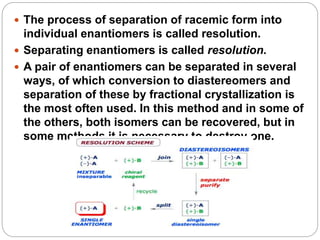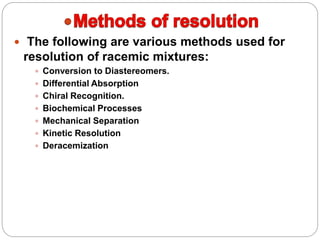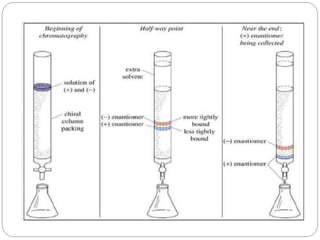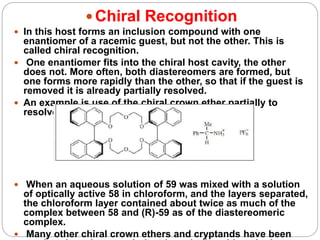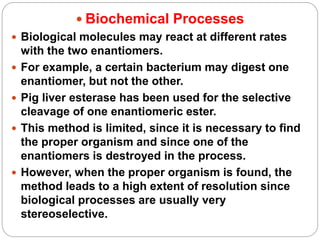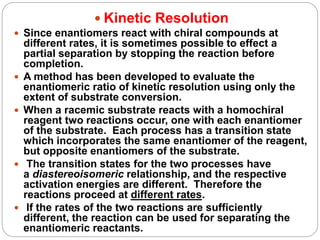The document discusses various methods for separating the two enantiomers within a racemic mixture. The most common method is conversion of the racemic mixture to diastereomers using a chiral resolving agent, followed by fractional crystallization to separate the diastereomers based on differences in solubility. Other methods include differential absorption on a chiral chromatography column, enzymatic reactions that preferentially target one enantiomer, and kinetic resolution that exploits small differences in reaction rates between enantiomers. The goal of these resolution techniques is to produce pure samples of the individual enantiomers.

